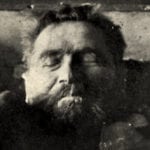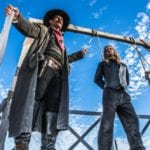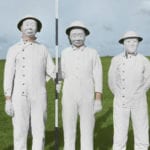 Books
Books  Books
Books  Humans
Humans 10 of the World’s Toughest Puzzles Solved in Record Time
 Mysteries
Mysteries 10 Scientific Mysteries We Don’t Fully Understand
 Weird Stuff
Weird Stuff 10 Celebrities Who Have Admitted to Alien Encounters
 Our World
Our World 10 Surprising Secrets of Notre Dame Cathedral
 Miscellaneous
Miscellaneous 10 Intriguing Origins of Popular Carnival Rides
 Weird Stuff
Weird Stuff Ten Unexpected Discoveries Involving Vomit
 Movies and TV
Movies and TV 10 Actors Who Almost Didn’t Take Career-Defining Roles
 Technology
Technology 10 Little-Known Shifts in Computer Science
 Religion
Religion 10 Catholic Histories That Reveal Acceptance of Abortion and Contraception
 Books
Books 10 Famous Writers Who Were Hypocritical
 Humans
Humans 10 of the World’s Toughest Puzzles Solved in Record Time
 Mysteries
Mysteries 10 Scientific Mysteries We Don’t Fully Understand
Who's Behind Listverse?

Jamie Frater
Head Editor
Jamie founded Listverse due to an insatiable desire to share fascinating, obscure, and bizarre facts. He has been a guest speaker on numerous national radio and television stations and is a five time published author.
More About Us Weird Stuff
Weird Stuff 10 Celebrities Who Have Admitted to Alien Encounters
 Our World
Our World 10 Surprising Secrets of Notre Dame Cathedral
 Miscellaneous
Miscellaneous 10 Intriguing Origins of Popular Carnival Rides
 Weird Stuff
Weird Stuff Ten Unexpected Discoveries Involving Vomit
 Movies and TV
Movies and TV 10 Actors Who Almost Didn’t Take Career-Defining Roles
 Technology
Technology 10 Little-Known Shifts in Computer Science
 Religion
Religion 10 Catholic Histories That Reveal Acceptance of Abortion and Contraception
10 Forgotten Horses In History
When it comes to horses, most people think of racing greats like Seabiscuit and Secretariat or television stars like Mr. Ed. But horses have a long and distinguished history, and many great ones have sadly been forgotten over time. Here are 10 noble steeds whose stories deserve far more attention than they typically get.
10Bucephalus
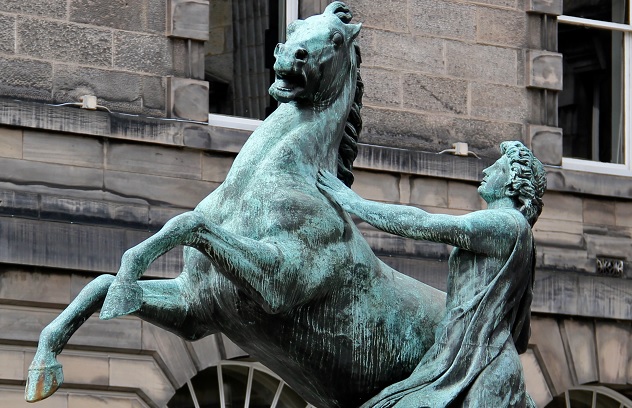
In addition to being the greatest military conqueror of his time, Alexander the Great was apparently the world’s first horse whisperer, too.
Legend has it that when Bucephalus was found, he could not be ridden by anybody. This included Alexander’s father, Phillip II of Macedon. Alexander deduced that Bucephalus had simply been scared by his own shadow, so he gently turned the black stallion’s head towards the Sun. Almost immediately, the wild beast was tamed.
Another version of the legend states that at 10 years old, Alexander was the only one who could approach Bucephalus. Alexander would speak softly to the great horse who would lower his head and allow the future warrior to ride him.
Bucephalus carried the great military leader into many battles and enjoyed great devotion from his master. After Bucephalus was kidnapped by a group of Persians, Alexander threatened to destroy all of Persia and slaughter every one of its inhabitants unless the captors returned his horse immediately. They quickly did just that.
Depending on which account you read, Bucephalus died from battle wounds, old age, or a little of both. Either way, Bucephalus became perhaps the first four-legged celebrity in history.
9Comanche
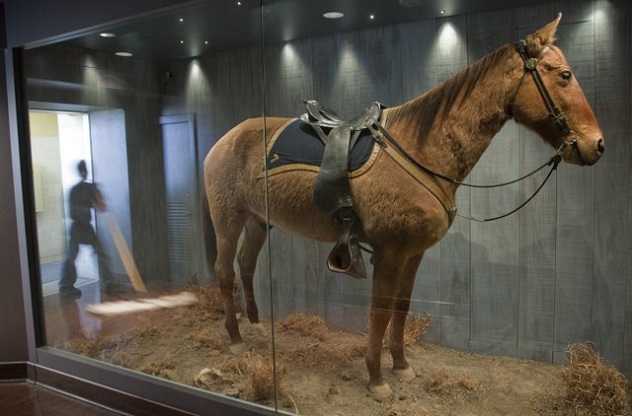
Comanche was a mustang purchased by the United States Army Cavalry in 1868. He got his name after being wounded in battle against Native Americans. The horse screamed when he was wounded by an arrow which prompted a soldier to observe that he yelled just like a Comanche Indian.
After the destruction of General George Custer and his troops at Little Bighorn on June 25, 1876, Comanche was found severely wounded. He spent a whole year recuperating at Fort Lincoln in North Dakota. After recovering, Comanche never fought again. In his retirement he became a celebrity, taking part in many special ceremonies and parades. People celebrated him as a symbol of Custer’s memory. Comanche is now stuffed and on display at the University of Kansas Museum of Natural History.
Part of Comanche’s fame rested on how until a few years ago, he was believed to be the sole survivor of the Custer’s Last Stand portion of Little Bighorn. As it turns out, there were probably other horses that made it. However, they were likely all taken hostage by the Native Americans and never heard from again.
8Marengo
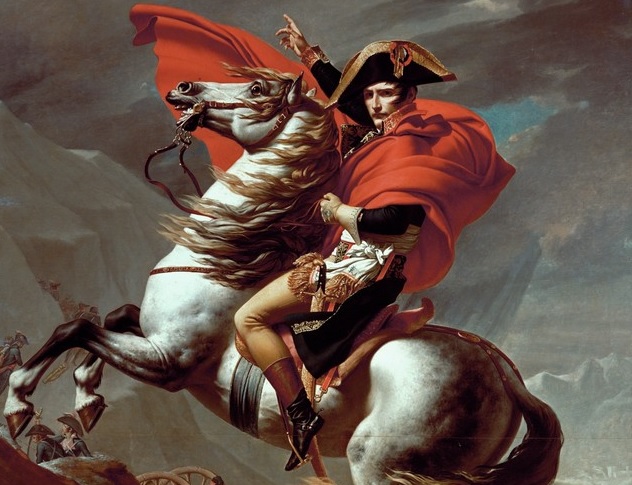
Marengo was foaled in County Wexford, Ireland. He was most famous for having walked over 5,600 kilometers (3,500 mi) roundtrip from Paris to Moscow in 1812. The entire time, he carried a certain famous figure you may have heard of: Napoleon Bonaparte.
Marengo was said to have been captured during Napoleon’s battles in Egypt. He quickly became the French emperor’s favorite horse and would carry him into every battle including Waterloo. Marengo is also famous for supposedly being distantly related to Copenhagen, the horse ridden by the man who defeated Napoleon at Waterloo: the Duke of Wellington.
Oddly enough, Marengo isn’t all that memorable inside the borders of France. His celebrity seems to have been promoted by the British Lord Petre who supposedly bought Marengo and took him to Britain after Waterloo. But Marengo’s name is nowhere to be found among the 150 horses Napoleon kept registered in the French stables of that era.
The story of Marengo appears to have no historical or nostalgic support in French records. You would think a horse associated with a legendary French figure like Napoleon would be considered a national symbol in that country. But since he isn’t, there’s legitimate doubt that Marengo was ever a real horse.
7Copenhagen

Copenhagen, on the other hand, was very real. He was also a fiery steed with a rather mean disposition. Copenhagen was so mean that after he and the Duke of Wellington returned from Waterloo and Wellington gave Copenhagen a celebratory pat on the rump, the horse responded by attempting to kick his master in the head. Luckily for Wellington (and probably Copenhagen, too), the horse missed. Imagine surviving a day of bullets and cannon fire only to be done in by a kick to the head from the horse that brought you to safety.
Copenhagen must have cooled off in old age because he became an absolute darling in retirement. He would readily approach strangers in search of bread and treats and let ladies gently remove his mane and tail hair and make bracelets out of them. After Copenhagen died, somebody stole one of his hooves, but it was soon returned and made into an inkstand. Copenhagen is so well regarded that his head was cast in bronze and put on display at Wellington College.
Now that’s how you remember the famous steed of a legendary military leader.
6Sergeant Reckless
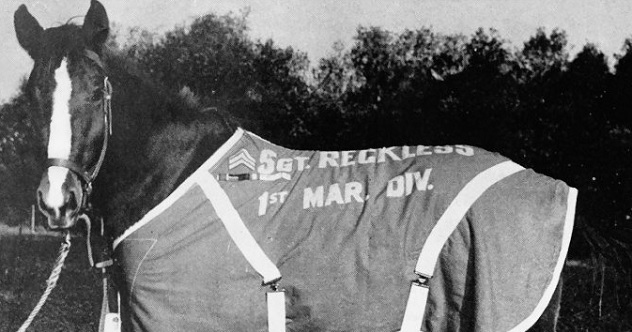
Many United States Marine units have a live animal mascot. Sergeant Reckless was something far greater than that. In the Korean War, a girl stepped on a land mine and lost her leg. In order to buy her a prosthetic limb, the girl’s brother sold the local Marine unit a chestnut Mongolian mare named Flame-in-the-Morning for $250. The Marines renamed her Reckless after the nickname they gave their weapons: “reckless rifles.”
Reckless helped her new owners by carrying antitank ammunition to the front lines. This quickly carved her a place in both history and in the hearts of her fellow Marines. Fearless in the presence of guns and cannon fire, Reckless was trained to drop to the ground and even avoid trip wires. During the Battle of Outpost Vegas, Reckless carried 4,100 kilograms (9,000 lbs) of ammunition to the front lines. This required her to make an amazing 51 round trips—in one day!
Friendly and revered by the Marines in her unit, Reckless would eat scrambled eggs and pudding, drink soda and beer, and generally act like any other soldier. The Marines thought so highly of Reckless, they even promoted her to the rank of Staff Sergeant. After the Saturday Evening Post published a story about Sergeant Reckless, she was brought to the United States and retired at Camp Pendleton in California. A bronze statue of her now stands at the National Museum of the Marine Corps in Triangle, Virginia.
5The Byerley Turk
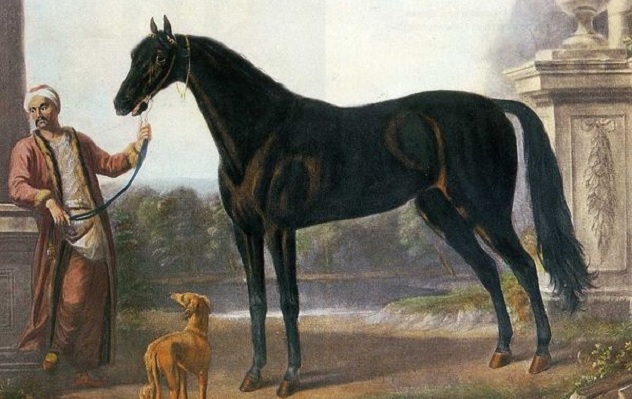
There were three Arabian horses from which all modern thoroughbreds are descended. One of them was called the Byerley Turk. Though the horse racing industry is usually very picky about recording pure bloodlines, no one really knows if the Byerley Turk was a pure Arabian horse or not.
In 1688, the British had just defeated the Turks at the Siege of Buda. One of the spoils of war was a magnificent stallion taken from a Turkish officer by a British captain named Robert Byerley. Since it was under combat conditions, there was no way for Byerley to verify the horse’s bloodlines. It is merely a good guess that the Turk was probably a purebred Arabian.
As a war horse, the Byerley Turk served his new master faithfully for a long time. When the horse retired, he was put out to stud and introduced to some very lovely mares indeed. Over time, he sired many great race horses who, if the legend of Byerley’s impure bloodline is true, aren’t nearly as well-bred as their owners may want to believe.
4Pinto
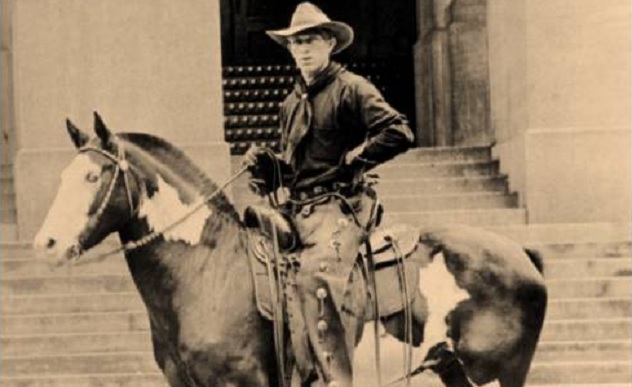
Pinto is the only horse to date to have ever walked the entire distance of the continental United States: 32,753 kilometers (20,352 mi). His is considered the longest documented journey of the 20th century.
In 1912, five men from Shelton, Washington decided to make history by riding on horseback to every state capital in the United States. Led by professional horseman George Beck, they called themselves the Overland Westerners. The group planned to finish their adventure at the 1915 World’s Fair in San Francisco and gain instant fame and fortune for their efforts.
Pinto, Beck’s horse, was strong and very sturdy. Even so, the group spent the next three years sore, cold, and hungry. Beck would make them a little money along the way by riding Pinto in exhibitions or by trading other horses for food and water. Otherwise, they were broke just about all of the time.
Finally on June 1, 1915, the group arrived in San Francisco. Alas, their dreams of fame and success were not to be. They simply could not convince anyone to write about or promote their story. Honestly, their biggest mistake was living 100 years ago. If this happened today, Pinto the Wonder Horse would have become an instant viral sensation with websites, blogs, and videos galore devoted to immortalizing his amazing journey.
3Beautiful Jim Key
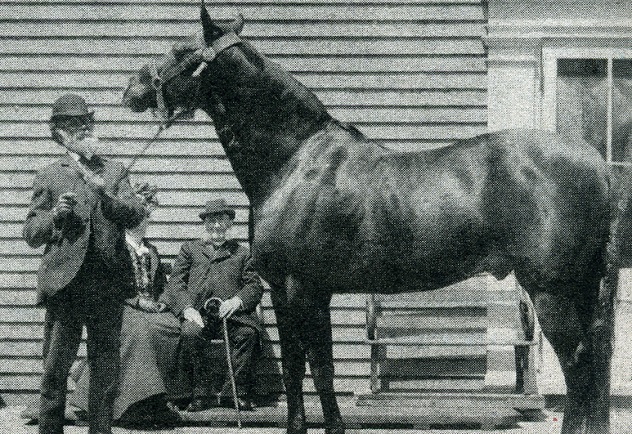
Beautiful Jim Key was trained by ex-slave Dr. William Key at the turn of the 20th century. Dr. Key would ask Jim to bring him a card with a certain letter on it. He would then reward him with sugar if he brought back the right one. After Dr. Key’s wife asked the horse if he wanted an apple, Jim learned to answer questions with a nod of his head. Dr. Key even tried to teach Jim to recognize passages of the Bible that referred specifically to horses.
Jim’s talents stretched even further. Using only his mouth and tongue, he learned how to take coins out of vases filled with water. He could even make correct change from a cash register. Dr. Key and Jim put on countless shows and demonstrations—once, they even performed for President William McKinley. They also made the national stage at the 1904 World’s Fair in St. Louis, Missouri.
What’s most touching about the relationship between Dr. Key and Jim is that Key refused to ever use a whip on his horse. Instead, he trained Jim with patience and kindness. In the process, Dr. Key became an early role model for humane training and treatment of animals.
Beautiful Jim may not be a household name right now, but his profile may explode soon enough—Morgan Freeman has signed on to portray Dr. Key in a future biopic about the man and his horse.
2Incitatus
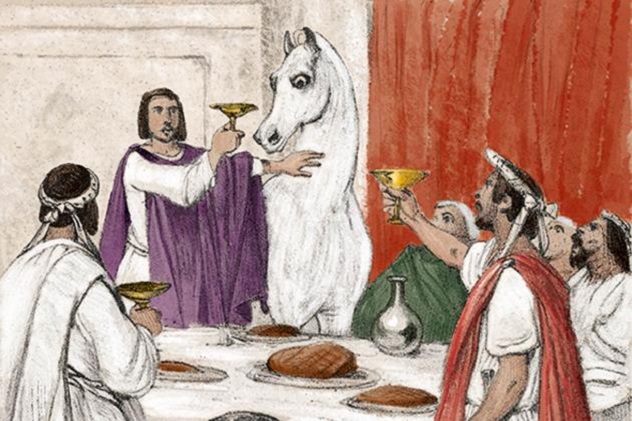
Incitatus was like a whinnying Kim Kardashian: no particular talent aside from attractiveness and famous relatives. In this case, Incitatus was the personal pet horse of insane Roman Emperor Caligula. For those unfamiliar with Caligula, take Julius Caesar on a bad day and cross him with Hitler and Mussolini. Add a dash of Daffy Duck and that’s the kind of ruler Caligula was.
Legend has it that Caligula was so crazy, he planned to name Incitatus a Consul of Rome. This was an extremely powerful position, as a Consul was a head of state, a military leader, and an executor of various decrees. There was almost always more than one consul at the same time, and they only ruled for a year since the Senate didn’t want any one consul to become too powerful. Especially if he was a horse.
No one is certain whether Caligula truly intended to make Incitatus a consul though. The historian who accused him of this—a chap named Gaius Suetonius Tranquillus—was born 30 years after Caligula’s assassination. Suetonius didn’t have any firsthand accounts on the subject and might have fabricated the story out of thin air to make Caligula seem even more crazy evil than he already was.
1The Talking Horses Of Elberfeld
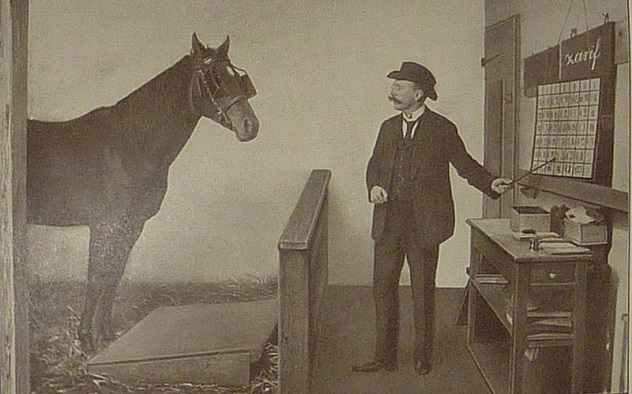
Around the same time as Beautiful Jim Key, there was a German horse named Clever Hans who could supposedly count, read, spell, and tell time. Experiments ultimately determined Hans actually reacted to physical cues from his owner, Wilhelm Von Osten. These cues appear to have been totally unintentional, and Osten never realized that he had unconsciously trained Hans to act human.
After Von Osten died, Clever Hans went to live with a scientist named Karl Krall. Krall also owned a Shetland pony named Hanschen, a blind stallion called Berto, a horse named Amasis, and two Arabian colts named Muhamed and Zarif. All of these horses could supposedly read, do math, and even talk. They collectively became known as the Talking Horses of Elberfeld.
Each of the horses could answer questions by spelling out the answers with their hooves. But Muhamed stood out most for his ability to find the cube roots of specific numbers. Given a question, he would beat out the answer with his hooves—one hoof for a number to the left of the decimal point and the other hoof for the right. He could also spell and speak by stamping his hooves in a sort of code.
Their intelligence extended past mere academics. One account states that Muhamed would actually let Krall know if a groom was being abusive toward them. From one horse to another, Muhamed would even scold Zarif if he started getting too lazy.
Sadly, no one knows the final fate of any of these horses. Once World War I broke out, Krall was forced to empty his stable. Many people think Muhamed ended up as a draft horse, but nobody can confirm that for sure.
+Brighty Of The Grand Canyon
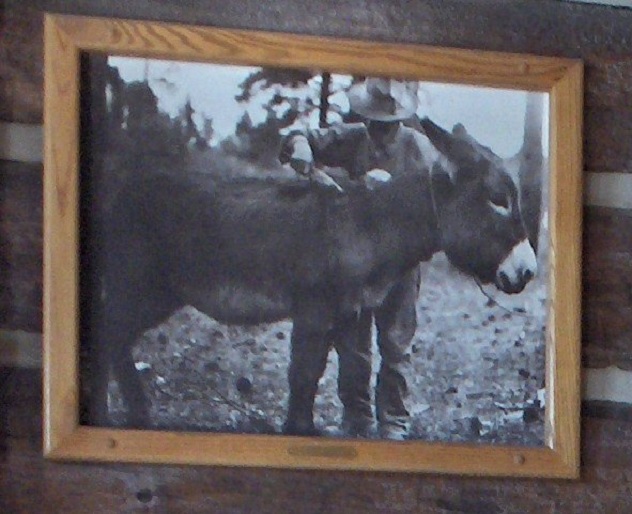
Brighty was a burro from the late 1800s who roamed the Grand Canyon for 30 years. He was first discovered around the Bright Angel Creek of the Colorado River near an encampment with supplies and gear for what looked like two men. These men had apparently hiked into the Grand Canyon using Brighty to carry their supplies and gear. They proceeded to disappear without a trace, and most experts think they were washed away by the Colorado River while trying to cross on foot.
Brighty became a four-legged member of a sparse community that lived around the Grand Canyon. He lived on his own but was always available to carry children around trails or help young boys carry water from a spring to tourists on the North Rim.
But instead of living out his days happily riding off into the sunset, Brighty met an unfortunate end as an unwitting accomplice to grand theft. A robber with $6,000 worth of stolen bonds from Arizona kidnapped Brighty and forced the burro to carry him through the Canyon. However, a terrible winter storm soon stranded the two in a secluded cabin with no food or supplies and no way to get them.
Eventually, another man looking for shelter found the pair. Short of food, the two men had to kill and eat poor Brighty to survive. Once the storm subsided, the thief quickly disappeared and was sadly never caught.
Peter is an amateur writer, Internet investigator, and humorist who pretends to be a salesman during daylight hours.




